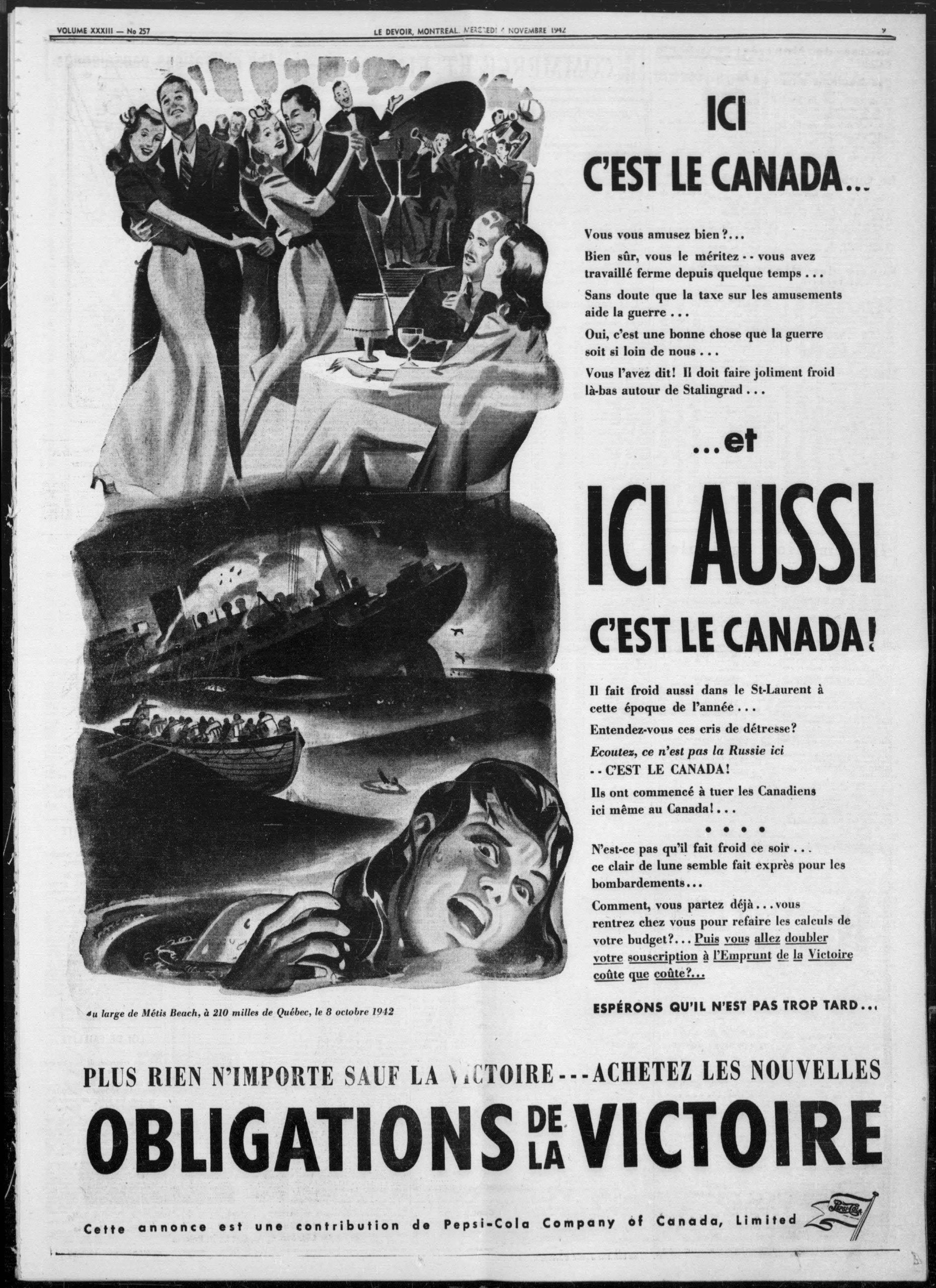Submarine Sightings – Metis and the Battle of the St. Lawrence

Poster
“Ici c’est le Canada: Plus rien n’importe sauf la victoire… achetez les nouvelles obligations de la victoire”, Le Devoir, 4 novembre 1942
Bibliothèque et Archives nationales du Québec
The declaration of war on Germany by Canada on September 10, 1939 brought an end to the peaceable kingdom. Canada joined the fight against Hitler’s Germany with a modest army and barely any equipment. By war’s end, Canada had the third largest air force and fourth largest navy in the world.
The St. Lawrence became a theatre of war in May, 1942, when the SS Nicoya was torpedoed by a German U-Boat off Saint-Yvon near Cloridome on the north shore of the Gaspé Peninsula. This was the first salvo in what would be dubbed “The Battle of the St. Lawrence”.
The battle came to Metis on October 9, 1942 when a freighter travelling upriver was torpedoed by U-69 off the Pointe-aux-Senelles. Eleven of the crew of the SS Carolus were lost. Fifteen were picked out of the water by the Royal Canadian Navy vessels accompanying the convoy. The sunken ship today lies just 245 metres north-east of the Maurice Lamontagne Institute. The sinking made headlines across the continent.
Metis lighthouse keeper Octave Gendron was among those interviewed by the press in the days following. He revealed that he had reported a submarine sighting to the government in July and told of watching a U-boat for an hour after it had surfaced between the lighthouse and the shore “while a dance was in progress at the beach.”
Could this be the origin of the tale told by subsequent generations that German submariners had come ashore before returning to their U-boat to resume the Battle of the St. Lawrence?

